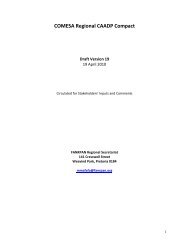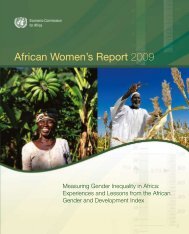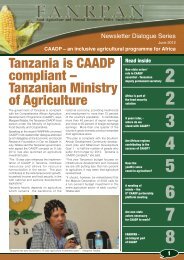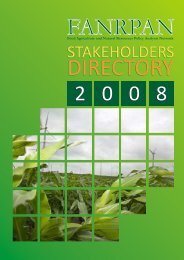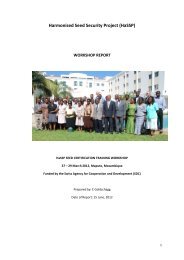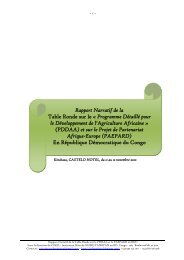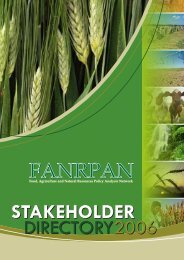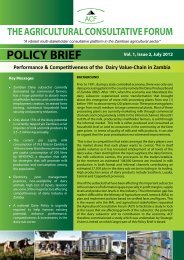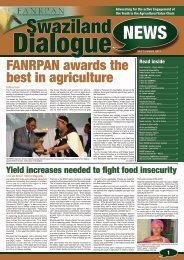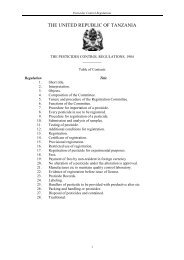Community-driven development decision tools for rural - IFAD
Community-driven development decision tools for rural - IFAD
Community-driven development decision tools for rural - IFAD
- No tags were found...
Create successful ePaper yourself
Turn your PDF publications into a flip-book with our unique Google optimized e-Paper software.
Sustainable arrangements tofinance CDD projectsXCommon project funding mechanismsUnder <strong>IFAD</strong> loans, project funds are disbursed from a special account operated by the PCU. Thispractice is also used by most international and bilateral cooperation agencies. Under thisarrangement, project funds may or may not be included in the budget vote as Appropriations-in-Aid (AIA) 39 but, unlike other government fiscal and non-fiscal revenue, they do not transitthrough the Unified Consolidated Current Account (UCCA) and are not disbursed by thetreasury to the agents involved in project implementation. Instead, the government’s share ofproject costs is disbursed by the treasury into the special account to complement the externaldonor’s funds that are available to the PCU. In practice, the PCU becomes an ad hoc agent ofgovernment delegated to make financial transfers <strong>for</strong> the purpose of project implementation.The procedures envisaged <strong>for</strong> the handling of funds by the PCU ensure adequate accounting,financial reporting and audit in accordance with internationally accepted practices. Furthermore,in the case of CDD projects, the procedures would be expected to• maximize the effectiveness and efficiency with which funds are used at the community level;• ensure that funds are actually used to respond to community demands that comply with theproject menu and conditions;• facilitate the <strong>development</strong> of effective partnerships between the public administration, <strong>rural</strong>community organizations and locally active <strong>development</strong> agents of the private sector andcivil society.The PCU’s central role in funding project activities gives the external donor and centralgovernment a direct point of intervention in case the PCU, or some of the organizations thatreceive funding through the PCU, deviate from project objectives.Designing funding mechanisms <strong>for</strong> long-term sustainabilityPCUs are ad hoc arrangements that end when externally-funded projects close. They are nonsustainableby definition. To support CDD, a country needs permanent funding mechanismsthat, over time, can accommodate declining contributions from external public cooperationagencies and increasing contributions from government and non-government sources,including the communities and private philanthropic organizations. 40 A <strong>decision</strong> should bemade during project design as to whether the PCU arrangement can be designed to helpestablish support mechanisms <strong>for</strong> the CBOs that will be sustainable after project closure.Governments finance community-level <strong>development</strong> with their own resources in addition tousing external cooperation assistance. Technically, this requires an allocation <strong>for</strong> that purposein the budget vote. The vote may indicate the geographic distribution <strong>for</strong> the funds to betransferred, as well as other criteria that must be applied <strong>for</strong> their use. In countries that havedevolved responsibility <strong>for</strong> <strong>rural</strong> <strong>development</strong> to the district level this vote should be, inprinciple, at the disposal of the District Assemblies. The equity objective of the budget policyrequires that the transfer of funds from the central to local governments be governed by theprinciple of “reverse tax capacity”. This establishes a “fonds de péréquation”, whereby the poorestdistricts of the country receive more support from the centre than the wealthier districts.39 For more in<strong>for</strong>mation about this and other technical expressions and acronyms used in this chapter, see Appendix 1: A Note onFiscal Decentralization.40 The reader is reminded that this is one of the specific objectives of the approach highlighted in the introduction.71



